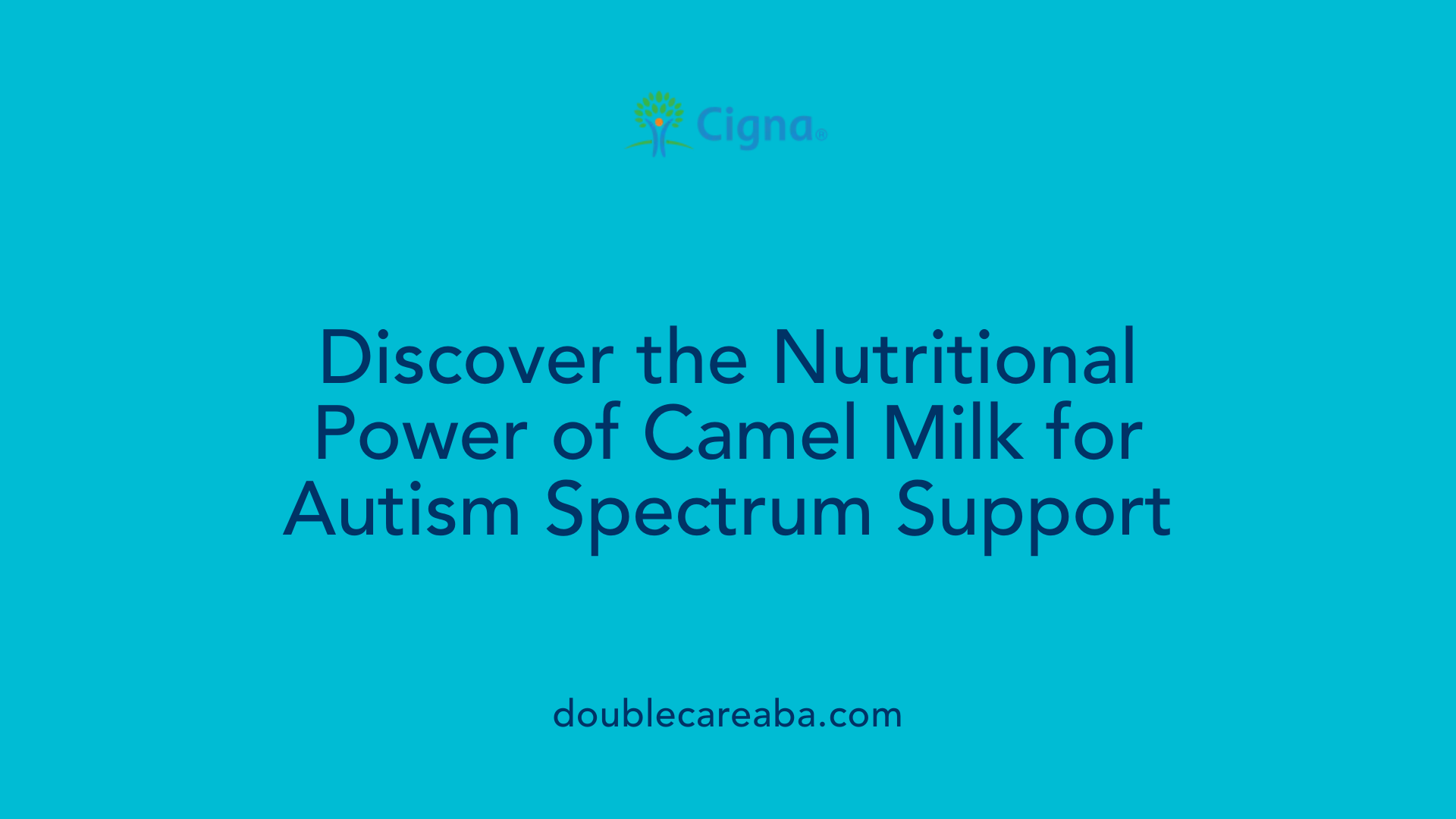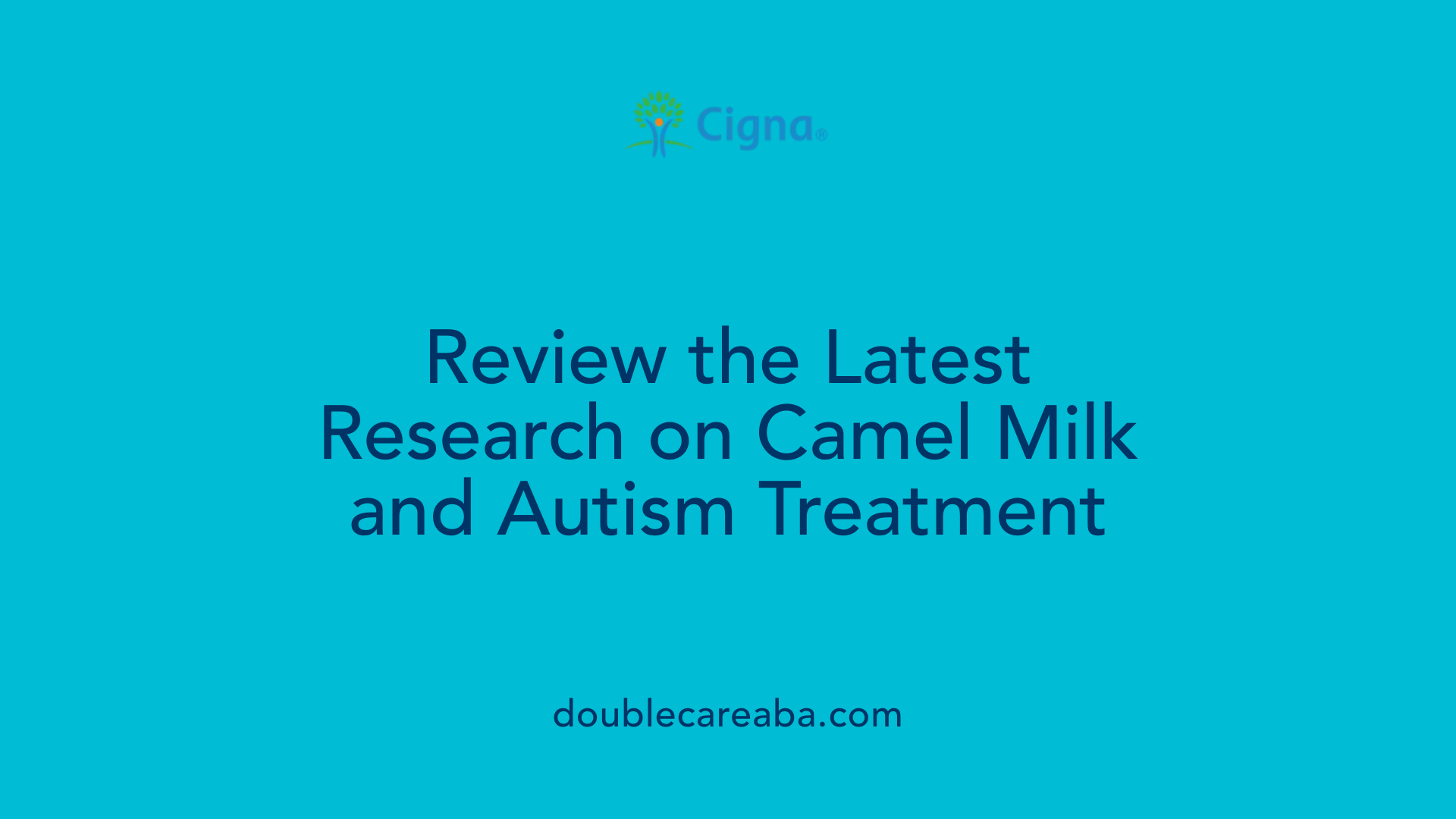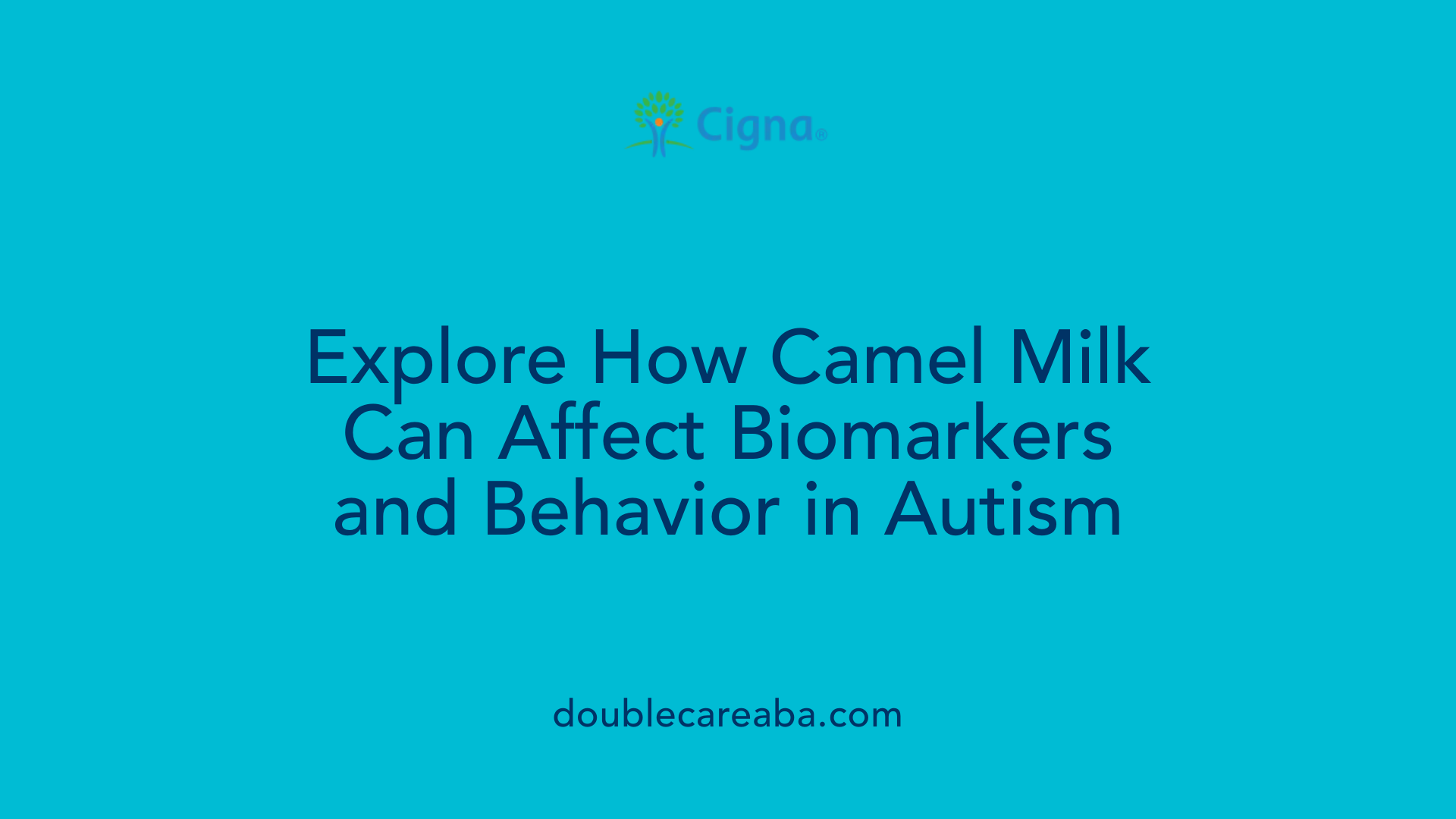Understanding Camel Milk and Autism
Camel milk has gained attention for its traditional medicinal uses and its potential as a supplementary treatment for autism spectrum disorder (ASD). While anecdotal claims suggest improvements in behavioral and physiological symptoms among children with autism, scientific research remains limited yet promising. This article delves into the nutritional properties of camel milk, recent scientific findings, possible benefits, and associated risks, providing a comprehensive overview for parents, caregivers, and healthcare professionals interested in exploring this unconventional intervention.
Nutritional Composition and Health Benefits of Camel Milk

Are there nutritional benefits or health considerations associated with consuming camel milk for children with autism?
Camel milk is rich in numerous nutrients that can support general health, which may be particularly beneficial for children with autism spectrum disorder (ASD). It contains high levels of vitamins, especially vitamin C, as well as essential minerals like zinc and magnesium. These nutrients are important for immune function, development, and overall well-being.
In addition to basic nutrients, camel milk includes immunoglobulins and bioactive peptides. These components are believed to help modulate the immune system and reduce inflammation, which is significant given the growing evidence linking immune factors and autism symptoms.
Recent studies have explored camel milk for its potential therapeutic effects. Notably, research indicates that regular consumption may help lower oxidative stress—a condition linked to autism—by increasing levels of antioxidant enzymes such as glutathione (GSH), superoxide dismutase (SOD), and myeloperoxidase (MPO). These changes suggest that camel milk could support improving oxidative balance in autistic children.
Behaviorally, some studies have reported improvements in autism severity and related symptoms after camel milk intake, including better communication, reduced irritability, and enhanced motor skills, as reflected in lower scores on the Childhood Autism Rating Scale (CARS). However, these findings are preliminary and not yet supported by large-scale, high-quality research.
Camel milk is also considered to have a lower allergenic potential compared to cow’s milk, making it a potentially safer alternative for children with dairy sensitivities or allergies common in autism.
Despite its nutritional benefits, there are important health considerations. Raw camel milk can carry bacteria and germs that pose a risk of food poisoning. Therefore, it is generally recommended to consume boiled or pasteurized camel milk. Additionally, it is vital for caregivers to consult healthcare professionals before adding camel milk to a child's diet, particularly to assess allergy risks and appropriate dosing.
In summary, while camel milk offers many promising nutritional and potential health benefits for children with autism, more comprehensive research is required to confirm its efficacy and safety. Proper medical guidance remains essential when considering it as part of a therapeutic strategy.
Scientific Evidence and Clinical Studies on Camel Milk for Autism
 Recent research exploring the potential benefits of camel milk for children with autism has produced intriguing findings, although conclusive evidence remains limited.
Recent research exploring the potential benefits of camel milk for children with autism has produced intriguing findings, although conclusive evidence remains limited.
A significant clinical study involved 45 children aged 2 to 12 years diagnosed with autism. Participants were randomly assigned to receive either raw camel milk, boiled camel milk, or cow milk (used as a placebo) over a two-week period. The results showed notable changes, such as decreases in serum levels of thymus and activation-regulated chemokine (TARC), an inflammatory marker linked to autism.
Behaviorally, only the children who consumed raw camel milk demonstrated a meaningful reduction in autism severity scores as measured by the Childhood Autism Rating Scale (CARS). This suggests that camel milk might influence autism symptoms, possibly through its anti-inflammatory and immune-modulating properties.
In terms of biological effects, the study observed an increase in antioxidant biomarkers like glutathione (GSH) and myeloperoxidase (MPO) after camel milk intake. Such antioxidants are believed to combat oxidative stress, which has been linked to autism pathology. The study also found improvements in other immune markers, such as a reduction in TARC levels, hinting at camel milk's potential to modulate immune responses associated with autism.
Camel milk has long been used in various cultures for its medicinal properties, including treatment of diarrhea, autoimmune conditions, and diabetes. Its rich antioxidant content and immune support proteins have made it a popular, though unproven, alternative therapy for autism.
Despite these promising findings, it is important to note that scientific evidence supporting camel milk as an effective autism treatment is still emerging. More extensive, high-quality, double-blind, placebo-controlled studies are necessary to confirm these preliminary results.
Comparison of Study Designs and Outcomes
| Study Type | Participants | Intervention | Key Findings | Notes |
|---|---|---|---|---|
| Clinical trial | 45 children, 2-12 years | Raw/boiled camel milk, cow milk placebo | CARS improvement only in raw camel milk group; decrease in TARC levels | Short-term, 2 weeks; minimal adverse effects |
| Biological assessment | 64 children | Camel milk (raw and boiled) | Increased GSH & MPO; reduced neuroinflammatory markers | Highlights potential oxidative stress reduction |
While initial results show promise, consulting healthcare professionals before considering camel milk therapy is essential due to potential risks like bacterial contamination in raw milk.
Biological and Behavioral Improvements Linked to Camel Milk

Impact on oxidative stress markers like GSH, SOD, MPO
Research investigating camel milk’s effects on children with autism has revealed significant changes in biomarkers associated with oxidative stress. Specifically, plasma levels of glutathione (GSH), superoxide dismutase (SOD), and myeloperoxidase (MPO) increased notably after two weeks of consuming camel milk. These antioxidant molecules play a crucial role in neutralizing reactive oxygen species (ROS), which are often elevated in individuals with autism. The elevation of these markers suggests that camel milk might bolster the body's antioxidant defenses, potentially reducing cellular damage caused by oxidative stress.
Changes in autism severity as measured by CARS
In addition to biochemical changes, behavioral assessments also showed improvements. The Childhood Autism Rating Scale (CARS), a widely used measure of autism severity, demonstrated a significant reduction in scores after children consumed raw camel milk. This indicates a potential alleviation of autism symptoms, including challenges with social interaction, communication, and behavior. Notably, these improvements were observed only in the raw camel milk group, implying that certain components preserved in raw milk could have a more pronounced effect.
Immune and anti-inflammatory effects
The study also explored immune-related markers, such as serum thymus and activation-regulated chemokine (TARC). Levels of TARC significantly decreased in children who consumed camel milk, suggesting a reduction in inflammation. Since immune dysregulation and inflammation are often linked to autism, these findings imply that camel milk might exert anti-inflammatory or immunomodulatory effects, contributing to the observed behavioral improvements.
Biological mechanisms that may underlie behavioral improvements
Camel milk contains a variety of bioactive compounds, including antioxidants, peptides, and vitamins, which may influence biological processes related to autism. Its anti-inflammatory properties could help modulate immune responses, while its antioxidant components may decrease oxidative damage in the brain. These biochemical effects could translate into improved neural function and behavior. Although promising, these mechanisms are still under investigation, and current evidence mainly highlights associations rather than definitive causal pathways.
| Aspect | Description | Supporting Evidence |
|---|---|---|
| Oxidative Stress Markers | Increase in GSH, SOD, MPO levels post-consumption | Suggests boosted antioxidant defenses |
| Autism Severity | Reduction in CARS scores in raw camel milk group | Indicates behavioral improvement |
| Immune Function | Decrease in TARC serum levels | Implies reduced inflammation |
| Underlying Mechanisms | Antioxidants, anti-inflammatory compounds in milk | Possible biological basis for improvements |
Current research indicates camel milk might influence both biological factors and behavioral symptoms in children with autism. However, more extensive studies are needed to confirm these initial findings and clarify how exactly these effects occur.
Risks, Safety Concerns, and Usage Recommendations

What are the risks or side effects associated with consuming camel milk for autism?
While some studies suggest potential benefits of camel milk in managing autism symptoms, it is important to be aware of possible risks and side effects. Camel milk can cause allergic reactions, particularly in individuals with existing milk allergies. Symptoms of allergy may include hives, swelling, or difficulty breathing.
Another significant concern is bacterial contamination. Raw camel milk, which is sometimes used in traditional therapies, can carry bacteria and germs that cause food poisoning or other infections. Proper processing and pasteurization are crucial to minimize this risk.
Regarding safety for children, although camel milk has been tolerated well in some cases, adverse reactions like stomach discomfort or irritability can occur. Therefore, it’s essential to consult healthcare professionals before adding camel milk to a child's diet.
Following medical advice ensures that the benefits outweigh potential hazards. Healthcare providers can assess individual allergies and recommend safe preparation methods or alternative options. Overall, while camel milk shows promise, careful consideration and supervision are necessary to avoid health complications.
The Path Forward with Camel Milk
While initial studies on camel milk suggest potential benefits for children with autism, including improved oxidative stress markers and behavioral outcomes, the evidence remains preliminary. More rigorous, large-scale clinical trials are essential to firmly establish its safety and efficacy as an adjunct therapy. Careful consideration of health risks, proper processing, and professional medical guidance are critical before incorporating camel milk into autism management strategies. Ongoing research continues to explore the biological mechanisms at play, offering hope for future validated treatments rooted in traditional practices.
References
- Camel Milk as a Potential Therapy as an Antioxidant in ...
- Camel milk: autism therapy guide
- Effect of camel milk on thymus and activation-regulated ...
- Camel Milk for Autism: What Are the Benefits?
- Best Milk for Autism Child
- Camel Milk as a Potential Therapy as an Antioxidant in ...
- Camel milk: Nutritional composition, therapeutic properties ...














